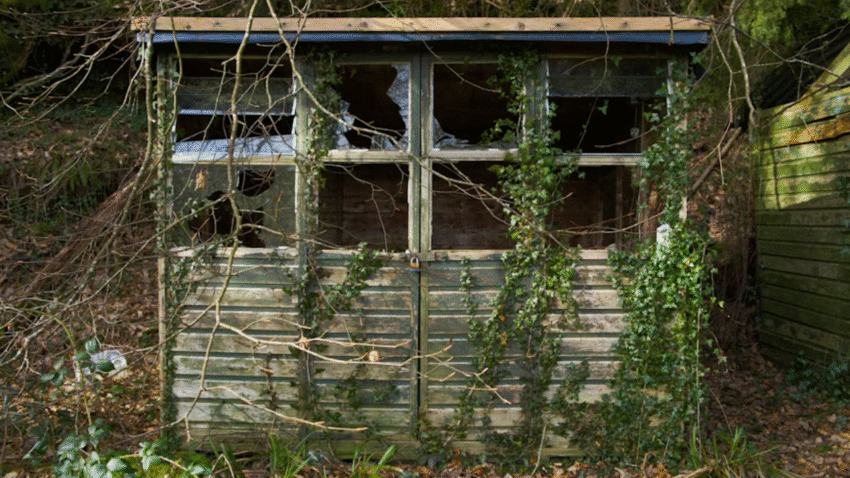Introduction
Is your shed floor starting to feel soft, uneven, or sagging underfoot? Learning how to fix a sagging shed floor can restore your shed’s safety, stability, and functionality. Over time, moisture, pests, or heavy loads can weaken the shed floor, causing it to bow or sink. Fortunately, with the right tools and approach, you can repair and reinforce the floor so your shed feels sturdy again.
Why Fixing a Sagging Shed Floor Matters
A sagging shed floor isn’t just inconvenient—it’s a warning sign of structural damage. Left unchecked, it can lead to injuries, damage to stored items, and even complete floor collapse. Fixing the floor early prevents more costly repairs later and extends your shed’s lifespan. A solid floor also makes it easier to store heavy tools, lawnmowers, or equipment without worrying about further damage.
Step-by-Step Guide to Fixing a Sagging Shed Floor
1. Identify the Cause of Sagging
Inspect the floor to determine what’s causing the problem. Common issues include:
- Rotting or water-damaged joists
- Weak or undersized support beams
- Pest damage from termites or rodents
- Soil settling under the shed
Understanding the cause ensures you repair the root problem—not just the symptoms.
2. Empty the Shed
Remove all tools, equipment, and items from the shed. A clear workspace makes the repair safer and easier.
3. Lift and Support the Shed (If Needed)
If the shed is sagging due to ground settling, use a jack to gently lift the structure. Place concrete blocks or treated lumber under the shed to create a level foundation.
4. Remove Damaged Flooring
Use a pry bar to lift and remove any rotten or weakened floorboards. If joists underneath are damaged, mark them for replacement as well.
5. Replace or Reinforce Floor Joists
Cut new pressure-treated joists to size and secure them to the existing frame using joist hangers or screws. For minor sagging, you can add sister joists (extra boards attached to existing joists) for added strength.
6. Check the Foundation Support
If the shed sits on skids or blocks, ensure they are level and stable. Add gravel or concrete blocks under weak spots to prevent future sinking.
7. Install New Subfloor Panels
Once the joists are solid, lay down new plywood or OSB panels as the subfloor. Secure them tightly with screws to prevent squeaks or movement.
8. Seal and Protect the Floor
Apply a water-resistant sealant or paint to protect the new floor from moisture and pests. This step helps prevent the same issue from happening again.
9. Move Items Back In Carefully
Once the repair is complete, replace items gradually, avoiding heavy objects in one concentrated area to prevent uneven stress on the floor.
Common Mistakes to Avoid
- Ignoring the Underlying Cause
Solution: Always check joists, foundation blocks, and moisture issues before replacing boards. - Using Untreated Wood
Solution: Use pressure-treated lumber for joists and floor panels to resist rot and pests. - Failing to Level the Foundation
Solution: Ensure the shed sits on a stable, level base to prevent future sagging. - Only Replacing Floorboards
Solution: Reinforce or replace weak joists first, then install new boards for long-term stability. - Skipping Protective Sealant
Solution: Always seal the floor to prevent water damage, especially in damp climates.
Extra Shed Tips & Hacks
- Install a Vapor Barrier: A plastic sheet under the shed prevents ground moisture from rotting the floor.
- Add More Floor Supports: For heavy equipment storage, install additional blocks or skids under the shed.
- Inspect Annually: Check for soft spots, pests, or water damage to catch issues early.
Want more maintenance tips? Check out our guide on how to weatherproof new shed construction.
Conclusion
A sagging shed floor is a fixable problem if you tackle it early. By reinforcing joists, repairing damaged boards, and improving the shed’s foundation, you can restore a strong and level floor that will last for years.
Take the time to address the root cause, and you’ll enjoy a safer, more functional shed that can handle all your storage and project needs.
Bookmark this guide to keep your shed in top condition year-round!
